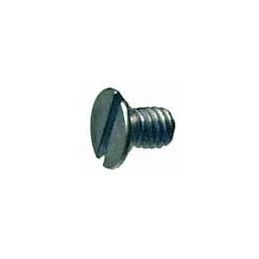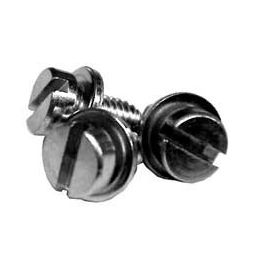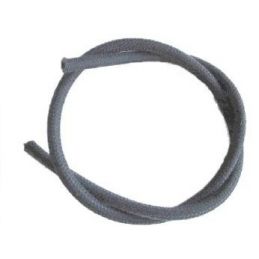Gauges - The ones you really should be running.
- Written by Steve Phillips for HotVWS Magazine -
Gauges. Do I need them? What gauges are we talking about? I'm going to discuss what I think works and what I have been doing for the last 40 years.
Do I really need them? Not technically, but if you’d like to stop a catastrophe before it happens, I highly suggest some basic aftermarket gauges. For example, the stock oil pressure idiot light comes on at 3 to 5 pounds or less. So if you’re driving down the road and the light comes on, you’re already toast. The light should say call a tow truck. I have spent a lot of money on my motors and I want to know what's going on. The biggest reason is because I want to know if I’m getting into trouble before I am actually in trouble. With that said, an oil pressure gauge is a must. What other gauges might I need? I tell my customers the minimum three I like to have is: oil pressure, oil temp and a tach.
Oil Pressure. This can show you what's going on in the motor as far as the pressure goes. A good motor will have around 10 to 20 lbs of pressure at an idle. 40 to 60 at rpm once the motor is warmed up. This will be higher when the motor is cold. If you have an off road car this is a great gauge to have, so when you’re climbing or cornering hard you can tell what is going on with oil slosh and do something about it.
Oil Temp. I find that up to 200 is ok (I know this is controversial, but this is what I have found to be true). At 205 I need to change how I'm driving to see if it will come down. At 210 I look for a place to pull over and 212 is too hot. Now this all depends on where you’re taking the oil temp from. I have tried the sender in different areas of the motor. I have settled at where the oil pressure is taken from on type 1 motors and type 3 motors. On type 4 motors I run them in an adapter that takes the place of the oil filter to remote the filter and add a cooler. I have tried the sender in the sump area. It does work there and if that is your only option it works. This is what I have noticed. Let's say you're pulling a long steep hill. Your oil temp is going to go up as you're putting more load on the motor. That’s normal. What I found is as you crest the hill the temp is still going up as you start down the back side of the hill. How’s that? Well the case is still heating up from the climb. It does go down but takes a while. Having it in the oil stream you will notice it goes up faster and goes down faster. That works better in my opinion.
Tach. I have found on daily driver motors the engines want to run between 3200 and 3800 hundred for extended periods of time. What I mean by that is it’s ok to take the motor higher, but you can't hold it over 3800. Every motor has its own sweet spot where the pressure stays up, oil temp stays within range and is just happy. With that said I had a young customer that got a full scholarship at MIT. He called me one day and said hey Steve I need to do a paper on a mechanical failure, do you have anything you would like me to do for you? So I gave him a stock 1600 crank that was broken in two. About six months later I got a 50 page report on why it broke along with some electron microscope pictures and some graphs showing the stresses on the crank as the RPMs go up. Keep in mind here these engines do not have a vibration damper. Around 4000 rpms the stress on the crank went way up. It was the harmonics that were causing all this stress. Now balancing the engine and having a counter weighted crank helps, but harmonics are harmonics and they won't go away completely just because you balance your engine. In conclusion, the report I got from him reinforced what I thought. On off road motors, you're on the throttle and off the throttle so you're not really holding the RPMs in one spot.
So those are the three that I run on everything here. If we build you any kind of motor that is not stock, stock, stock and in a vintage original car, I will insist you have at least these three gauges. If you're spending a lot of money on a motor don’t you want to know what it's doing?
What about other gauges? Those are the most important three I run. If I was to add another gauge it would be a voltmeter. I have tried amp gauges and find the voltmeter tells me what I need to know. I get a lot of people asking me about cylinder head temp gauges. Back in the 70’s and 80’s I ran this gauge and always had issues with it. The sender is supposed to go around the spark plug. Well if you put it there the tin cuts it. So then I started putting in on an exhaust stud. That was better but again always seemed to have trouble with it. The final straw for me was when I had it in a bus that had a stock motor in it. The gauge read 350 most of the time. I then had one in my Friday/Saturday night street car with a 2110. High compression 10 to 1, big cam, and 48 IDAs. The hottest it ever got was 275. What? Really? How can that be? Well I figured the heads were getting fuel cooled as that thing got 8 mpg on a good day. After that I stopped running it. I found oil temp to be a better judge of what's going on. If the heads get hot, guess what? The oil gets hot. Other gauges can be cool to look at but again those three are the most important ones in my opinion.
So let's talk about wiring the gauges. This is what I do. I also tell my customers if they wire it this way I will help them with any problems or questions they have while doing it. If they use trailer wire, one color wire, speaker wire, romex wire, extion cord wire or anything else (yes I seen all that), I will not help them. So here are my wire color codes. I use 16 gauge wire. Black for keyed power (power comes on with the key) Why? Because black in a VW is hot with the key on. I use Brown for the grounds. Why? Because VW used brown as ground. I use white for the illumination bulbs, why? Because VW uses a white with a red stripe on dash lights. I would love to use that wire but you're not going to find stripped wire easily. I use green for the Tach. Why? Because your condenser wire is green and the tach hooks up to the same side of the coil as your condenser. I use blue for oil pressure. Why? Because the factory idiot light wire is blue with a yellow stripe. I use yellow for oil temp. Why? The factory oil pressure wire is blue with a yellow stripe. If you keep that in mind you're very close to the factory wiring and with a quick glance you will know what each wire is and does. Beats the hell out of chasing wires to see where they go. When I wire gauges I run the blue, green and yellow right along the factory main harness. Seems to work well for me. I chain my black wires from each gauge (power) then to the black wire that works the idiot lights. I chain my grounds for the gauges together and just ground them to the body. I also chain the brown grounds for the dash lights together and then to ground. Do not chain the dash light grounds to the gauge grounds. Been there, done that. If you do when you turn your headlights on it will affect the reading of the gauge. I chain my white wires for the dash lights together and tie them into one of the factory dash lights. That’s it.

I'm not telling everyone to go out and buy gauges, but I would think about it. Redding CA is hot as hell. One year I saw two small men throw a golden ring in my yard. Yeah, it's that hot. So it’s hard on these motors during the summer. The other thing I see is people running no name brand gauges and having issues. I use either VDO, ISP, or auto meter. Keep in mind, there are a ton of differing opinions on this stuff. This is what works for me.







